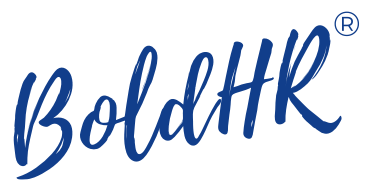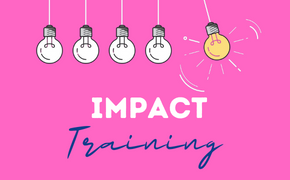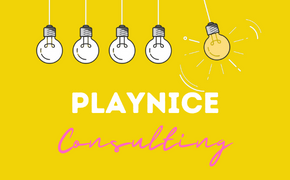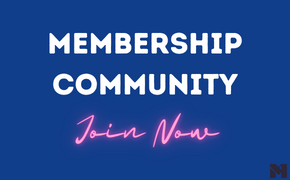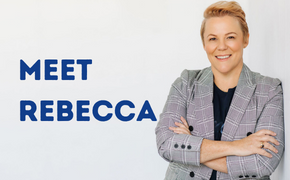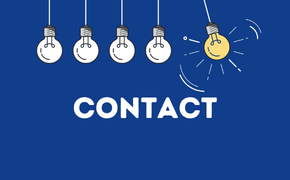BOLDHR’S 2022 FORECAST
- What the real issues are
- What they’re not
- 6 action steps to navigate you through it

The Covid era will long be remembered by those living through it, and will be studied by historians, biological and social scientists and political students for decades to come.
The last two years have not only seen a global pandemic that has killed over 5 million people and infected a quarter of billion; challenging modern medicine and stretching healthcare systems worldwide.
It has also seen challenges to long-held political dynamics – the rise of China, the challenges to Russian power, Britain exiting the European Union, and an assault on the US Capitol Building.
The climate situation continues to worsen, with catastrophic wildfires, bigger and more frequent storms, and more intense droughts every year.
The increasing success of Black Lives Matter and #MeToo movements show society is no longer tolerant ofinjustice and inequity – but that lack of tolerance is also manifesting in the rise of extremism and hate crimes.
Did you know?
“May you live in interesting times” is an ancient Chinese curse?
I think we all know that 2022 is going to be another big year – many of the challenges of the last two years have not yet been resolved, and the implication of them has not yet been fully understood.

SO WHAT WILL 2022 BRING?
Economic recovery is firmly on the agenda, putting a different pressure on businesses keen to bounce back, but facing the new headwinds of global supply chain breakdowns and labour shortages. Business will battle harder to regain and surpass lost ground.
Covid continues – forecasts confirm that we are likely to have a few more waves and a few more lockdowns. The current northern hemisphere winter is proving that the spectre of lockdowns is definitely not over, even in some of the world’s most vaccinated countries, so Australian business should not consider itself immune to further Covid-related disruptions.
Continued progress on the injustice front is likely to maintain momentum, but equally likely is continued political and social polarisation, backlashing and rising extremism. These phenomena are driven by increasing levels of intolerance – which is creeping into our workplace relationships too.
No workforce remains unaffected by these trends – even at the lowest level, they breed a sense of anxiety and trigger threat-state behaviours which affect worker sentiment, workplace relationships and business performance.
We’re facing into ‘Covid year 3’ from a base of sheer exhaustion. In Australia, we’ve already done two tough years – surviving Covid year 1 and waiting out Covid year 2.
But combine these unresolved threats to our resilience with an increasing desire to bounce back economically, we can see another storm brewing for the year ahead.
Unlike 2020, when it came out of nowhere, this time we can even watch it as it gets closer – but many of us don’t yet know what to do about it.
BoldHR recently conducted two polls to gauge the sentiment of Australian professionals on the biggest talent priorities facing business in 2022.
Conducted in partnership with Maxxia, 300+ HR Leaders believe the great resignation followed by staff wellbeing are their greatest priorities. The same question put to 850 workers, showed that staff wellbeing followed by return to office resistance were their two biggest priorities for 2022.
Lowered wellbeing and heightened resistance are certainly key themes on the global stage, and we’ll explore the implications of those to our workforces shortly.
The good news is that recent research is showing some trends and results that we can use to prepare and increase our confidence in leading our people through Covid year 3.
In this white paper, we’ll take a look at what the real issues are, what they are not, and give you 6 action steps to help you navigate through it.

In the history of the world the workforce has never been this disconnected.
That’s a huge statement, but when you pause for just a second, it’s obviously true.
We’ve worked shoulder to shoulder on the hunt, in the cave, in the fields, in the factories and now today, in the office. We have always been side by side at work.
But not for the last two years.
You might be thinking ‘wait a minute I’ve never been more connected – I’m on TEAMS all day!’.
Well, digital connection doesn’t work the same way.
Connection has been proven to be a major contributor to wellbeing during the pandemic – research shows that a high number of regular, positive interactions have a direct correlation to general happiness and resilience. Conversely, a low number of interactions and / or poor quality, negative interactions also affects your wellbeing. Regardless of the strength of your social networks, physical distancing has been reported to increase depressive symptoms, generalised anxiety disorder, intrusive thoughts, and acute stress.
Online meetings challenge our social brain massively which distracts us from the act of true connection. Prolonged eye contact and up close images trigger threat-state reactions in our psyche, information and processing overload exhausts us and our collective favourite – seeing our self-image all day introduces a new sense of self-awareness that adds to our cognitive load. These signals all distract us from actually connecting with the person on the other end of the call.
Despite spending more time online, we still lose physical and emotional connection to those we are talking to. As a result our workforce is feeling disconnected at a human level.
Disconnection is a major social side-effect of Covid, and it is having a material impact on the wellbeing of our workforce
#1 – DISCONNECTION REDUCES RESILIENCE
According to Gartner, Workforce Health has three components – healthy employees, healthy work relationships and a healthy work environment. Workforce Resilience is an overall measure of the intersection of these three components – a highly resilient team is able to sustain or improve these components during times of disruption. But, it’s simply not happening.
We all knew well before Covid that our workforce was stressed and resilience was low. But now resilience is even worse.
Even before the pandemic, organisations were introducing policies and programs to support employee wellbeing, with some of the best addressing physical and financial wellbeing, stress and work-life balance with their benefits articulated through a clear EVP.
Despite accessing these initiatives from as early as 2018, HBR’s recent global research tells us that 85% of workers report a decline in their wellbeing since the pandemic, with key drivers being mental health, increased work demands, and feeling isolated from work and from their leader.
Resilience is dropping. And workload is rising.
ADP research proves that full time remote workers are doing an extra day per week at the moment – and HBR research shows that increased work demands are one of the top drivers for wellbeing issues. Recent Gartner research shows that 85% of the workforce have experienced higher levels of burnout since the pandemic, while a global study by Adecco found that Australian office workers are the most burnt out in the world.
Gartner tells us that the priorities for 2022 are growth and transformation which means we will be expecting more from our workforce. Building these plans on a workforce that has the lowest workforce resilience ever recorded, is going to be an issue for business performance if left unaddressed.
Burnout might be the next global pandemic
The Adecco Group’s latest research shows that Australia is suffering the highest levels of burnout globally and the highest return to office anxiety. “54% of young leaders report that they have experienced burnout, the same group who shoulder significant responsibility for future progress.”
#2 – DISCONNECTION DESTROYS TRUST
In the work that I do, I have seen a massive escalation in distrust between individual and manager, across and inside teams – a marked deterioration of once-healthy working relationships. In some cases, I’m asked to support friction and miscommunication – in others, a full break-down and combative behaviours.
No matter where on the spectrum the relationship has got to, the common denominator is always an erosion of trust.
PWC tells us that the #1 thing workers want today is simply good co-workers. For the first time ever (and mirrored in the global success of equality and justice movements) workers are putting their foot down on toxic relationships because trust matters more.
But with the uncertainty and disruption of Covid, trust is at an all-time low. Gartner research shows that since the pandemic 41% of employees have lower trust in their teams and 37% have lower trust in their leadership. In Deloitte’s 2021 Global Resilience Report, more than a third of respondents were not confident that their organisation had done a good job of developing trust between employees and their leaders.
So where does this lack of trust come from?
Trending research shows that a lack of genuine communication and engagement is a major cause of decreased trust within organisations.
While online meetings are becoming increasingly common, 71% of participants in a study by HBR said meetings were unproductive, inefficient, or missed engagement. Worse still, CISCO’s 2021 Hybrid Work Index tells us that 52% of people are not talking in online meetings. This means we are talking at people and no longer with people.
That makes people feel that they are not being included in the conversation, which erodes their trust in how decisions are being made.
Employees are looking to work alongside colleagues and leaders whom they can trust – and they want to be trusted in return. Having managers who place trust in their staff to ‘get the job done’ ranks in the top 5 managerial traits employees desire in 2022 – and without building that trust within their team, leaders will be facing a real pain point in the future.
Did you know?
Globally, the relationship between staff and their leaders has deteriorated by 17 points. Less than half of non-managers feel their relationship with their leader is good.
#3 – DISCONNECTION CREATES A THREAT RESPONSE
Being increasingly disconnected and in a climate of constant change and uncertainty creates the same behaviours as we often see in wartime society – self-preservation, blame and retreat.
When under prolonged ‘attack’ we are prone to stronger behavioural tendencies around:
- Acute stress response – our fight or flight reactions are significantly exacerbated and spill over into the workplace making us either stand our ground or retreat and disengage.
- Ambiguity aversion – most humans naturally crave certainty and thus under pressure become moreresistant to accept change – we either fight the uncertainty (resist coming back to the office for example) or we flee from the uncertainty (disengaging with work, and possibly even leaving). Additionally, anyone who is seen to be introducing that ambiguity is likely to be blamed for it (most commonly people leaders).
- Confirmation bias – we believe what we want to believe and stick to it even when presented with evidence to the contrary. This increases our intolerance of alternative points of view, and creates polarised, firm positions that are hard to shake.
- Loss aversion – we are more concerned about loss than we are about gain. This drives up your likelihood of protesting small losses; even when the potential gains are greater. When we try to convince people to take a particular route of action, we often focus on the benefits. Minimising loss rather than maximising benefits in your communications will find more traction.
- Status quo bias – we hope things will stay the same if we do nothing or we seek to stick with decisions that were made previously – a common mindset that undermines and reduces individual resilience levels
If you are finding yourself negotiating and bargaining more than ever, then these factors are most likely at
play. Your employees are exhibiting a threat response and until you understand it, and how to leverage it,
you will continue to beat your head against it.
You may also be finding your workers are seeking to blame others for the stress they are experiencing. This blame is typically targeted at their immediate or senior leader, or at HR. A worrying side effect of this is increasing disengagement and burn-out across leadership and HR cohorts, both of which are reaching record proportions.
DID YOU KNOW?


In short, we have an exhausted workforce, exhausted leaders and exhausted HR. They are showing signs of disengagement and distrust, and are behaving in ‘threat’ state more regularly, with less control over their reactions than normal.
Next year is likely to be a big year from a growth and transformation perspective, and to achieve our corporate goals for 2022, we urgently need our workforces to be more resilient, to rebuild trust and strengthen relationships, and be open to further change. All things our workforce wants but aren’t currently able to give.
So what do we focus on to enable a return to a resilient, engaged and psychologically secure workforce?

The complexity of these issues will require a strategic, person-centred approach from Leaders and HR professionals in the coming months – but there’s a lot of information out there suggesting that the solution is simple. This is fake news.
So let’s take a brief look at three of the biggest trending fake news items, and articulate why these are not the primary items to focus on.
THE GREAT RESIGNATION
The biggest noise right now is the Great Resignation. A bit like the war for Talent, it makes a great bumper sticker, but it is NOT accurate.
It’s true that wages and mobility have been stagnant for a while, so a temporary market correction is inevitable – but it’s not as disastrous as some are making it out to be. People may argue that wages have increased in the last decade and they’re right, but in fact only in the first half of that decade – the last 5 years have been stagnant, so we do need to review our salaries before we end up spending over the odds to replace staff – who will find that price somewhere else.
Are we going to lose half our workforce? No. There is a spike of movement now, which corrects the lack of movement in the last 18 months but there is no evidence for it to continue in Australia. There is no turnover tsunami.
But we can surmise that if we lose even 10% of our workforce as a result of temporary market corrections, the knock-on impact to already exhausted staff will cause the real issues. With merely a 10% drop in headcount, the staff who remain:
- Are already suffering from exhaustion and don’t have the bandwidth to pick up the slack. Asking them to do so may force their hand.
- Will be enjoying a holiday or two next year, as they haven’t had a good one in almost two years – so they will not be at the same full capacity that we’ve seen in that time.
- Are more likely to put in for sick and long service leave having soldiered on for so long.
The Great Vacation doesn’t really hit the same panic buttons does it?
But it should, especially if you are already carrying vacancies into the new year.
Where we are experiencing chronic staff shortages, we do need to do business differently. We cannot recycle talent as we always have. The drop-out rate from the labour market is higher than we have ever seen and the entry rate is not keeping up which will mean a dwindling supply of talent as a general rule:
- Significantly worse in high-contact roles such as hospitality, health and retail where low level pay meets high level risk to turn talent off those opportunities.
- Worse in female dominated roles as women become more burned out than men, continue to provide more care to those at work and to those at home, and as a result increasingly question their career prospects.
- Worse in roles dominated by sub-contractors, as self-employment has dropped to the lowest level in a decade.
Yes, some movement in 2022 will happen, but it’s not about the great resignation. Rather, it is a great re-evaluation, which can be largely avoided with a great conversation.
DID YOU KNOW?
Did you know the war for Talent was coined by the same consultancies that are calling out the Great Resignation? They invented it in 1997. And it was only true in a small handful of countries for about 6 months, yet it persisted for 20 more years!
A RETURN TO NORMAL IN 2022
Another misleading statement I hear a great deal from all levels of business is that we will be back to normal soon. But businesses are not elastic bands that just ping back into place after being stretched. There are fundamental societal shifts that will not ping back to where they were – and may never return at all.
FLEXIBLE WORKING
Flexible working sharply increased during Covid due to necessity, and it’s now a work model employees aren’t willing to let go of. A recent Adecco study reports that 25% of workers are considering moving region.
In Australia we are seeing high levels of migration out of urban centres. We are currently experiencing 95% residential property clearance rates (85% is considered a property boom) and for the first time ever, an increase in regional investment of up to 25%. Employees are signalling their intent with their most valuable asset – and those employees who have moved their primary residence to beyond the suburbs are telling us they are very committed to remaining very flexible and that they will be very hard to shift.
So if your leadership team were resistant to flexible working pre-Covid and are expecting to ping back into shape – they are in for some serious resistance.
RE-BALANCING
With increased flexibility comes an increased commitment to work-life balance – the lines of which have become blurred this past year, with employees reporting Covid having a pronounced impact on their work-life balance, particularly for parents caring for children while working from home.
De-blurring the lines between work and life is sure to be a central point of contention into 2022 as people seek to reset the home office rules and redraw the lines between home and work. That, plus an increase in commuting hours for hybrid workers, will see the workforce push to reduce the number of hours they are available – which means we have to focus on new ways of working or suffer yet another dent in our
available labour hours.
A THIRD WAY OF WORKING
Moving into a permanently hybrid world of work is not ‘like before Covid’. It’s not like during Covid either when we were either surviving or ‘on hold’ for vaccinations to arrive. 2022 will be a brand new, third way of working that requires much more conscious design from HR and from Leaders. Beyond where and when we work, which has been a huge piece of work for 2021, we will also need to address new rules for:
- Quality experiences – if some of the team are at home and some in the office, are we going to return to that ‘second-class citizen’ experience of dialling into a room full of people who talk over those who are not in the room?
- Quality connections – how do we improve our managers’ ability to facilitate real discussions in hybrid settings – rather than the one-way virtual broadcasts that have become more prevalent in the last year, or will they delay real discussions until they are face to face?
- Compassionate accountability – how do we balance the need for compassion with the need for performance, especially with a workforce who are exhausted and less trusting than before? Are our managers equipped for this refined approach or are we hoping they will just work it out? Only 10% of leaders have those traits naturally, and less than 50% feel confident to lead today – so what are our chances of that?
OVER-OPTIMISM
Remember at the end of 2020 when we were all looking forward to a more certain 2021? It was wishful thinking then, and it’s wishful thinking now. It is highly unlikely that we will have a disruption-free 2022. Spot closures in schools and workplaces are likely to continue, and the emergence of another strain of Covid is a possibility. Pfizer and Gates are calling out another year of Covid before we truly return to normal, and even here in Australia that means we need to prepare ourselves for further waves and further lockdowns to avoid disappointment and further reduction of our fragile resilience.
As I tell many of my clients when they look optimistically at 2022 in the same way we did this time last year when waving farewell to 2021 – hope is not a strategy. Hope for the best, yes, but prepare for less.

ALL WE NEED IS A HOLIDAY
We do need a holiday – but unfortunately, that is not going to be the silver bullet that we need to build back resilience, discretionary effort, and engagement.
Evidence shows that the after-effect of a holiday lasts a matter of days, weeks at most. A study by UK benefits business, Perkbox showed an interesting disconnect in enthusiasm levels even when it came to additional holiday time. Only 39% of employees saw the additional holiday as a good idea compared to 70% of their Executive! For many, unless you eliminate a day of workload, then we’ve simply reduced the time available to get the work done, which actually increases stress levels.
Arianna Huffington’s firm, Thrive Global, has a neat solution for this – your out-of-office includes the fact that all your emails will be deleted, so if it’s important, they better send it again once you’re back. But many organisations are afraid of adopting this solution for fear of alienating customers or clients who may email while staff are away. Their solution? Some companies have been providing pop-up holidays, or simply announcing a day off tomorrow, rather than have staff be away for extended periods of time. The intention is fantastic, but the impact is negligible and even negative – the surprise factor of a day off tomorrow doesn’t let people plan their work OR their break, so it simply doesn’t deliver the benefits business or staff desired.
Aside from the short-lived benefits that holidays provide, the fact that so many employees are taking time off is also set to create further problems for organisations. Workers are anticipating taking their full allocation of annual leave next year for the first time in a long time with Booking.com telling us that travel intention is up 52%. With so many workers taking time off an inevitable hole will form in the workforce – one that leaders are already struggling to fill. But if you don’t allow your staff time off when they most want it, you risk lowering job satisfaction and even inciting resistance or resignation.
The Christmas holidays are not the cure-all for our exhausted state; we need to be more deliberate than that to be ready for 2022.

Now we’ve looked at the challenges facing our workforce, and dispelled some of the fake news about how to solve them, let’s have a look at the areas where you will see more impact, more easily for 2022 and beyond.
- Educating your Executive
- Rebuilding Trust
- Empowering staff
- Rebuilding Resilience
- Equipping your B-Suite
Let’s explore each of these, and as we do so, make a note for yourself which barriers exist in your organisation at the moment.
YOUR EXECUTIVE DON’T GET IT
Despite your best efforts, your Executive remains stubbornly confident that they know what their people need. They still make decisions on norms that are three or more years old and are resolutely cynical about the research you’ve put in front of them to the contrary. It’s like beating your head against a brick wall.
High-performing businesses have:
- Regular, quality listening and dialogue between C-Suite and workforce, and between C-Suite and B-Suite.
- Agreement on the norms that have changed, and the new assumptions that underpin decision making.
- A clear approach to negotiating the gap between what employees want and what executives want.
Did you know that the disconnect between executive and employee is the widest it has ever been? According to PWC, the greatest assumption gaps are:
- Values-alignment – #1 for executive, #16 for employees
- On-the-job learning – #2 for executive, #13 for employees
- Working with decent people – 13 for executives, #1 for employees.
YOU HAVE TRUST ISSUES
Do you have a powerful plan to build trust between C-Suite, B-Suite and your workforce so you can stop everyone pointing fingers at everyone else?
Successful Trust plans drive:
- Better engagement in hybrid meetings – did you know less than 50% of your workforce are talking in meetings right now?
- Safer conversations between people and leaders – did you know that people are twice as likely to speak to their leader about their wellbeing if they trust them?
- Higher engagement and increased accountability – did you know that trust creates oxytocin and that causes us to put in commitment to helping others, increases our productivity and enhances innovation?
YOU EMPOWERING YOUR STAFF – BUT THEY DISAGREE
Your business seems to be caught in a frustrating argument between empowerment and accountability
and getting nowhere.
Did you know that empowerment means ‘authority or power given to someone to do something’, and it’s a
major driver of disengagement? Empowering businesses:
- Lead through boundaries and principles, rather than policies and task management.
- Empowered staff have high confidence that their feedback is heard and rapidly actioned. They have significant voice and skin the game.
- People leadership is not the only way to gain influence and respect – subject matter experts are prized and sought out.
YOU HAVE NO CLEAR PLAN TO REGAIN RESILIENCE
I think we are all agreed that we have an exhausted workforce and that we have big goals for next year in terms of growth and transformation, and to handle that, we urgently need our workforces to be more resilient. To do that, business needs to:
- You’ve engaged your workforce on their resilience
- You have a clear view of the workload and work capacity of your teams
- You have effective methods of negotiating expectations
Do you have a clear plan to regain resilience, or were you secretly hoping the Christmas holidays will sort that out for you?
YOU HAVE NO DEDICATED TRAINING FOR YOUR B-SUITE
You sometimes just wish your B-Suite could just work it out, but even in HR circles you’re often struggling
to clearly articulate what needs to change.
B-Suite training that works is clear on:
- Mindset – the shifts in assumptions that your organisation requires
- Methods – the tools to to focus on for maximum impact
- Mastery – a clear ‘long tail’ of post-training actions to embed key learnings
B-Suite leaders play a critical role in engagement, well-being, trust, resilience – in fact every key driver we’ve
looked at in this paper.

HOW DO YOU COMPARE TO OTHERS?
In a recent poll conducted in partnership with MAXXIA across 300+ Australian HR Leaders in Australia, the following results were reported:
The two greatest barriers to meeting the Talent Challenges of 2022 were:
- Our executives do not understand our workforce needs
- We do not have a clear plan for regaining resilience
Followed by:
- We do not have dedicated training for our B-Suite Leaders.
Were your results the same?

If you rated READY in 4 or all of the 5 focus areas, then congratulations – your workforce is largely ready to face 2022.
If you rated READY in only 1, 2 or 3 focus areas then your workforce is not ready. Next year is going to be even harder than the last two and much of the pressure to be ready will fall to your already burned-out HR team.

BoldHR’s trademarked solutions are designed to help HR Leaders have more impact, and to more easily and confidently plot the path to tackle the Talent Challenges of Covid Year 3 and beyond.

BUILDING B-SUITE LEADERS WITH C-SUITE IMPACT™
The only program of its kind in Asia-Pacific designed exclusively for busy B-Suite Leaders, our program is affectionately known as Level Up. This mentoring program follows the BoldHR 3M mentoring approach for maximum impact – Mindset, Methods and Mastery.
The program gets results – more than 50% of members have been promoted since joining.
“Since joining the program, I’ve been promoted twice. My time with Rebecca was invaluable – she both validated and challenged my assumptions and mindset.” – Stacey Kelley, Director HR Services, Deakin
University
TALENT CONSULTING
Traditional consulting breeds a dependency on consultants. BoldHR™’ engagements breed capability. Our consulting is priced on your team’s capability, capacity and budget. With our expert team, you can choose to have us coach you to do the work, have us do the work alongside you, or have us do it entirely for you.
“Rebecca is able to quickly synthesise a complex strategy and very quickly break down ambiguous requirements into tangible actions. She has an uncanny ability to build trust with teams, effectively engaging them to execute whilst simultaneously transitioning them to deliver in new ways.”- Shannon Psaila, Global Head of OD, Planet Innovation
PLAYNICE TEAM EFFECTIVENESS, EMPOWERMENT AND ENGAGEMENT
Working with leaders and their teams who are newly formed or experiencing friction, Rebecca facilitates a series of conversations that articulate key problem or opportunity statements, expose root cause and develop clarity and alignment around the way forward.
These workshops tap into collective concerns, behaviours and values to re-establish connection, trust and resilience, and move teams from combative to collaborative and from apathy to action. Each program is fully customised to each client’s unique context and is highly iterative, evolving as the real issues come to light.
“Rebecca created an atmosphere of safety and trust which enabled us to honestly explore the things that were holding us back as a team. There was more than one leadership breakthrough during the program, and everyone felt it was a productive use of time. This was all delivered with warmth and humour, which we now realise is part of Rebecca’s signature approach.” – Shanna Evans, Director Strategic Comms and Marketing Department Transport Victoria
IMPACT TRAINING
Deloitte and McKinsey agree that the most important traits for leaders in today’s world of work are simply
these:
Control the Pace: Work on the right things, at speed, with great outcomes.
Use the Space: Make time to think strategically, often, to stay nimble and get smart
Make the Case: Influence in all directions, all the time.

Most B-Suite Leaders who are struggling to have the IMPACT they crave, are struggling to confidently shift their leadership style into a more contemporary mode, and are struggling to re-connect with their teams
in a re-evaluated way.
BoldHR™ suite of IMPACT training courses and workshops ensures that participants get what they need to be a B-Suite Leader with C-Suite Impact and focuses on developing both leaders and their teams to ensure a sustained shift.
“I wouldnt hestiate to recommend Rebecca to support any organization seeking professional, facilitative coaching and a strong contemporary leadership approach” – Charlotte Turner, Head of Training CLARINS

Meet Rebecca
Rebecca has over 20 years’ experience in Talent and is an expert on mid-level Leadership. Formerly Head of Talent and Careers for Australia Post Group, she has been instrumental in developing the capability and careers of literally thousands of people.
Rebecca is an AHRI Talent Strategy and Golden Quill award-winner as well as the best-selling author of IMPACT: 10 ways to level up your leadership and the architect of the Level Up, the only program of its kind dedicated to busy B-Suite leaders.
Known for her generous, fun yet no-nonsense style, clients rave about her ability to instil confidence
through the provision of tools and techniques that actually work.
Providing B-Suite Mentoring, Training and Talent Consulting to mid-large organisations across Australia, Rebecca has worked with clients such as Heinz, Allianz, Clarins and the Victorian Government. She is committed to building B-Suite Leaders with C-Suite Impact™. and supporting the HR profession to have more impact, more easily.
One of the things I love the most is the ability to help HR and People Leaders to have more impact, more easily.
I know how hard it is to do these jobs at the moment, and I know that burn-out in HR and People Leadership is the highest it’s ever been, so consider me an essential support mechanism, just for you, especially for times like these.
If you would like to discuss any of the themes, trends, insights or solutions outlined in this paper, please get in touch.

